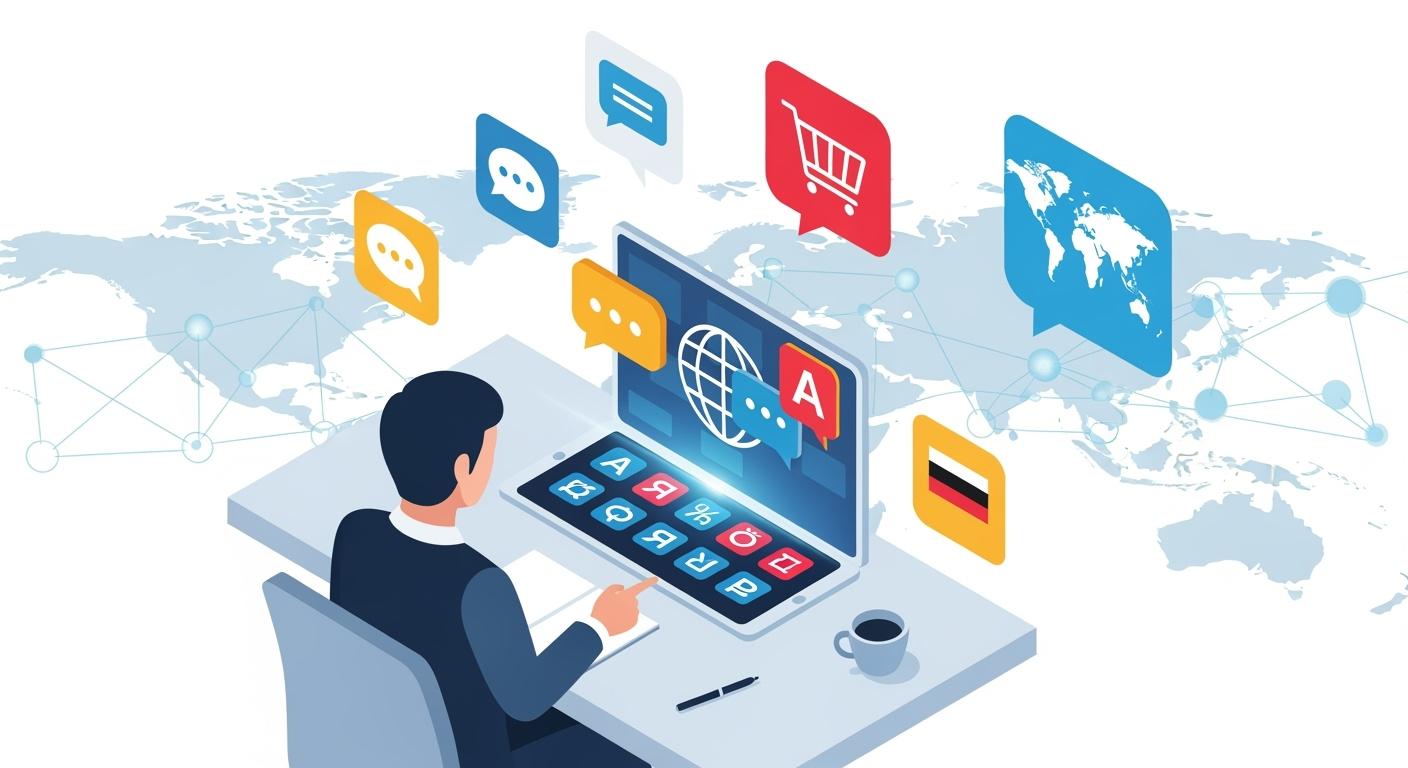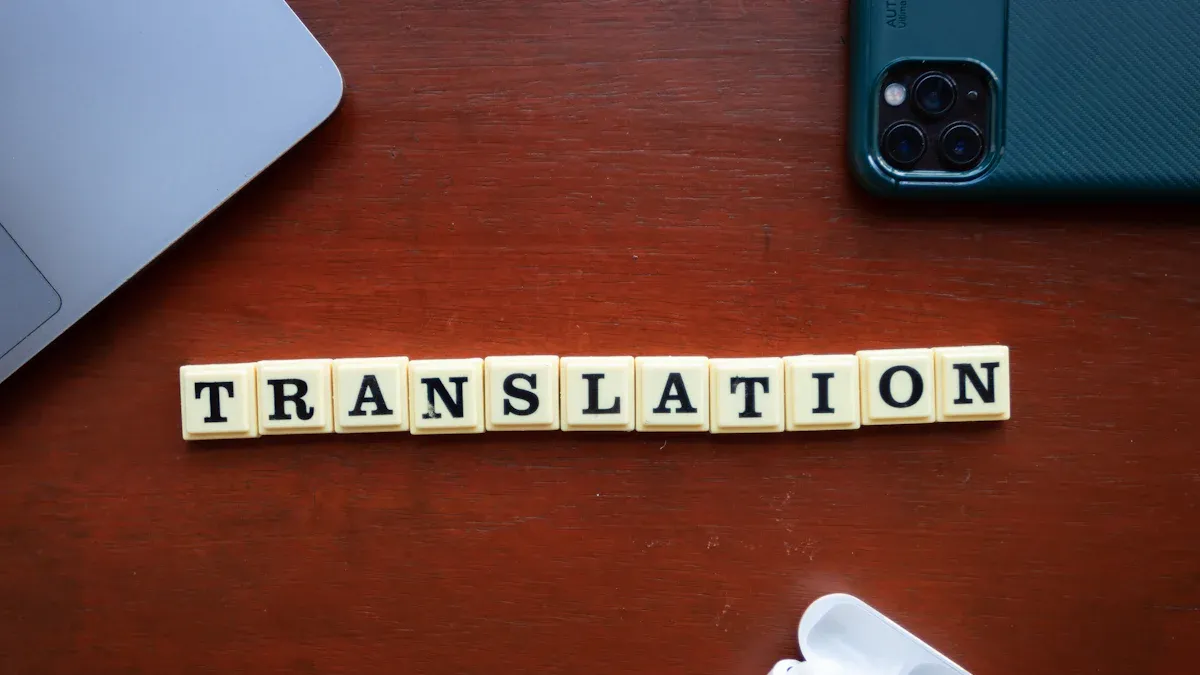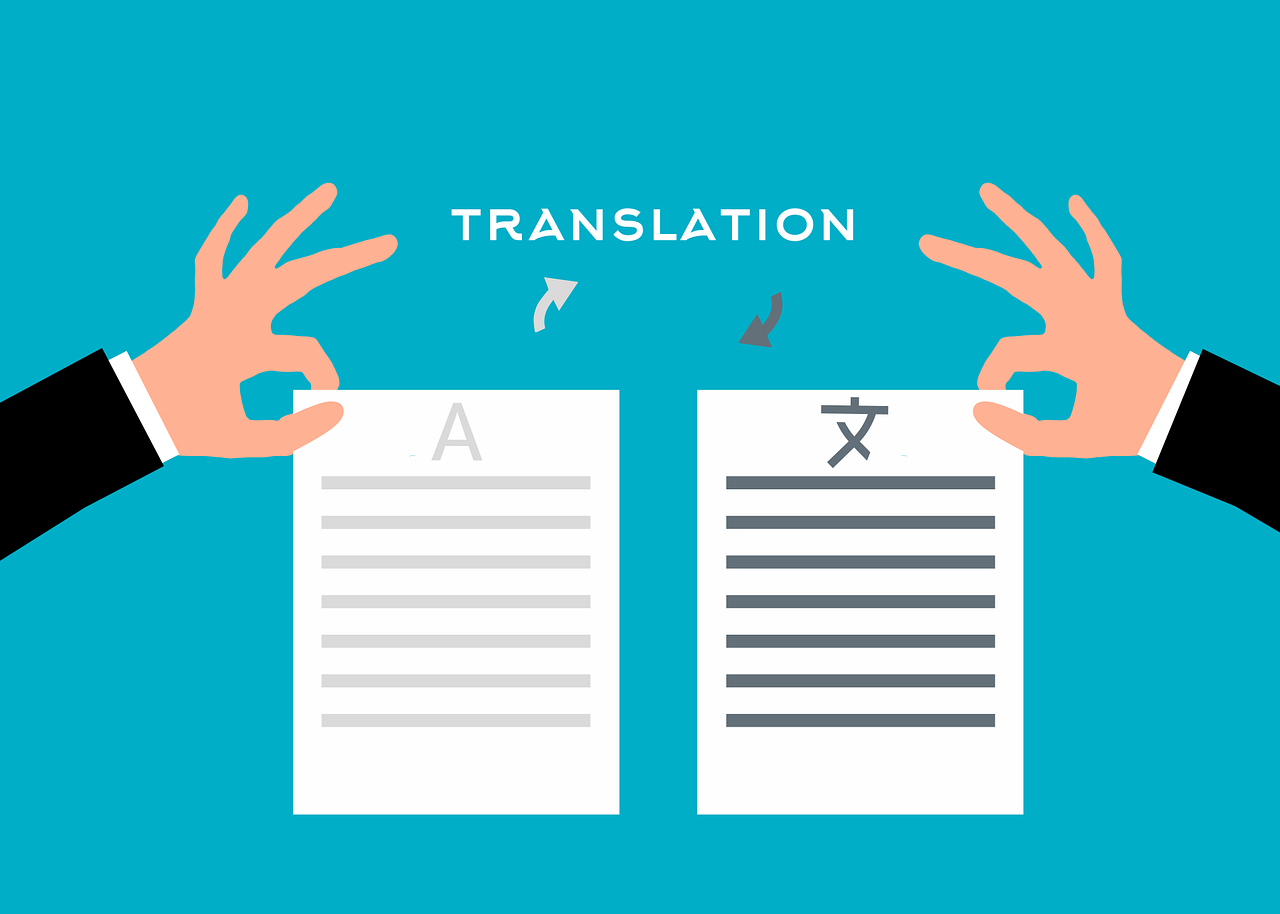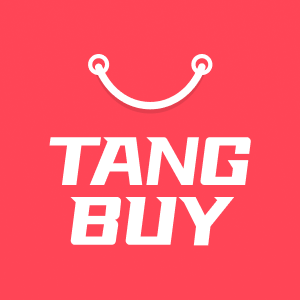AI Translation and Localization: Sell in Any Language Effortlessly

You want to reach customers everywhere, but language can seem hard. With AI Translation and Localization, you can get past that problem. You can translate your products or videos in minutes, not weeks. You save money and time because AI is much faster than people. AI works over 200 times quicker and cuts editing time by two-thirds. Your message stays the same, fits local cultures, and connects with people in their own language. This is how you sell all over the world without stress.
Key Takeaways
AI translation helps you save time and money. You can translate products in minutes, not weeks. Localisation changes your content for local cultures. This makes sure your message connects with customers. Using AI tools helps you reach new markets fast. This gives you a strong advantage. Keeping your brand the same is very important. Use glossaries and style guides to keep your voice the same in all languages. AI chatbots give quick help in many languages. This makes customers happier. Cultural adaptation is important. Change pictures and tone so your brand feels local and friendly. Check AI translations often with human experts. This makes sure they are correct and fit the culture. Track sales, customer feedback, and engagement in new markets to measure success.
AI Translation and Localisation

What Is AI Translation?
You may ask how AI translation works. It uses clever computer programmes to change words from one language to another. These programmes use machine learning and natural language processing. They can translate lots of text very quickly. Some tools are neural machine translation, rule-based translation, and translation memory. You can use these tools for product descriptions, emails, or whole websites.
AI translation:
Is quick and saves money.
Uses smart technology like neural networks.
Can work with many languages at once.
But AI translation sometimes misses small things. It may not get jokes or local sayings right. Human translators are better at these tricky bits.
For example, Coca-Cola’s ‘Share a Coke’ campaign did well in the UK but was misunderstood in China. This shows why it is important to get the meaning right for each culture.
What Is Localisation?
Localisation does more than just change words. You make your content feel right for each country or region. You change the language, images, colours, and even payment options. You make sure your website or app looks local.
Here are some important parts of localisation:
Translate words and phrases for local dialects.
Change content to fit local customs and avoid mistakes.
Swap images and videos to match local tastes.
Convert prices and measurements to local standards.
Adjust the layout for different reading styles.
Change subtitles and voiceovers for local media.
When you use AI Translation and Localisation together, your brand voice stays the same everywhere. Your message also fits each culture.
Role in Global Business
AI Translation and Localisation help you reach more people. You can launch products in new countries without waiting long for translations. Companies like Netflix and Amazon use these tools to connect with customers worldwide. Netflix, for example, adapts its shows for over 190 countries. Nike saw sales go up after a local campaign in Japan.
You build trust by speaking your customer’s language.
You save time and money.
You avoid mistakes that could harm your brand.
AI translation can change a 50-page document into 25 languages in minutes. This speed helps your business grow faster. You can also keep your brand voice strong and clear wherever you sell.

How It Works
AI Translation and Localisation might look like magic, but there is a smart process behind it. You can use it to translate products, customer support, and marketing content. This helps you reach more people and saves time. Your brand message stays clear everywhere.
Product Translation
You want your product details to be in every language your customers use. AI tools help you do this in a few easy steps.
Real-Time Updates
When you change a product or launch something new, you do not want to wait for weeks. AI-powered systems do this job fast. Here is how it usually works:
Pre-translation prep: The system splits your text into small parts. It uses your style guide and glossary.
Translation: Neural machine translation or large language models make a first draft.
Quality checks: The AI looks for strange phrases or formatting problems.
Post-translation assembly: The tool puts everything back in the right order.
Tip: Tools like Crowdin AI and Lokalise AI help you with these steps. They give real-time tips and support many languages. You can update your product listings right away.
Brand Consistency
You want your brand to sound the same everywhere. AI Translation and Localisation tools use glossaries and style guides to keep your voice steady. Crowdin lets you set up custom workflows. Your team can check and approve translations. Lokalise gives you an easy way to review everything before it goes live. This keeps your brand familiar in every language.
Customer Support
Good support builds trust. With AI, you can help customers in any language at any time.
Multilingual Chatbots
AI chatbots talk to your customers in their own language. They use instant translation to understand questions and give answers fast. You do not need a big team in every country. The chatbot answers simple questions. Your team can focus on harder problems.
Chatbots translate messages right away.
They break language barriers and make support faster.
Your customers get quick and correct help.
Automated FAQs
You can use AI to translate your FAQ pages. When you add a new question, the system translates it for every market. This keeps your help centre up to date and easy to use. Crowdin and Lokalise let you automate these updates, so you never fall behind.
Marketing Content
Your marketing should connect with people everywhere. AI Translation and Localisation make this easy, but you still need your message to be clear and local.
Social Media
Social media moves fast. You want your posts to reach people in their own language right away. AI tools translate your posts and suggest local hashtags or keywords. For best results, follow these steps:
Ask a local reviewer to check important posts.
Optimise your content for local search engines.
Test different versions to see what works best.
Note: A/B testing helps you find the best message for each market.
Website Adaptation
Your website is your shop window. AI Translation and Localisation tools change your site for every visitor. They change text, images, and payment options to match local habits. Crowdin and Lokalise help you manage these changes. Your site always feels local and friendly.
Automation makes the process faster.
Real-time tips improve accuracy.
You can support many languages and cultures at once.
If you only use basic machine translation, you might miss important details or cultural hints. That is why it is smart to use AI with local knowledge. This helps you avoid mistakes and keeps your customers happy.
Localisation in Practice

Cultural Adaptation
Imagery and Tone
You want your brand to feel friendly everywhere. Pictures and the way you speak matter a lot. If you use photos, colours, or symbols that people like, they feel welcome. When you talk in a way that matches the local mood, people trust you more.
40% leave sites that do not use their language.
Localised sites get 70% more sales than others.
When you change your content for each place, you show respect. This helps people trust you and want to come back. Volkswagen did this in Brazil. Their first slogan did not work well. They changed it to “Você conhece, Você confia” (“You know, you trust”). This made people feel understood.
Humour and References
Jokes and local sayings do not always work in every country. Something funny in one place might upset people somewhere else. You need to check your jokes and make sure they fit. If you get it right, people feel like you understand them. If you get it wrong, they may lose interest.
Tip: Always ask local people to check your jokes before you use them.
Local Compliance
Currency and Payments
You want customers to pay without problems. Show prices in their own money and use payment ways they know. AI Translation and Localisation tools help you do this for each country. They also change dates and measurements, so everything feels right.
Legal Texts
Every country has its own rules to follow. You must obey laws about privacy, ads, and product labels. Some important things to check are:
Copyright and trademark rules
Product labels
Online shopping rules
Marketing limits (like alcohol ads)
Legal experts help you avoid mistakes and keep your business safe.
Aspect | Description |
|---|---|
Legal and Regulatory Compliance | You must check local laws and ask legal experts to make sure your content is right. |
User Experience
Navigation
If your website or app is easy to use, people stay longer. Localisation helps by making menus and buttons clear in every language. When you use the right words and signs, people find things faster. This stops confusion and makes them want to return.
Menus in the local language are easier to use.
Local designs help people feel at home.
Accessibility
You want everyone to enjoy your product, even people with disabilities. Localisation helps by making text, sound, and pictures work for all. When you change your content for different needs, you show you care.
Localised apps feel more friendly and easy to use.
People spend more time on apps in their language.
Trust grows when you respect local needs and customs.
Note: Companies with local customer service see a 170% rise in happiness. When your product feels local, you build strong bonds and keep customers coming back.
Benefits
Speed and Scale
You want your business to move fast. With AI Translation and Localization, you can reach new markets in days, not weeks. You do not have to wait for long manual processes. AI handles thousands of pages in under an hour. You can launch products or update your website quickly. This speed helps you stay ahead of your competitors.
Here’s a quick look at how AI compares to manual translation:
Aspect | AI Translation | Manual Translation |
|---|---|---|
Turnaround Time | Under an hour for thousands of pages | 7 to 12 business days for 12,000 words |
Cost per Word | $0.01 to $0.05 | Higher per-word costs |
Document Handling | Large volumes quickly | Limited capacity |
You can also track your progress in real time. Many businesses use dashboards and delivery alerts to see how projects are going. You get updates as soon as tasks finish. This makes handovers smooth and keeps your team on track.
You see task progress and get alerts for delivery.
You use client feedback and retention rates to check performance.
Cost Savings
You want to save money while growing your business. AI Translation and Localization helps you cut costs. You pay less per word and handle more content at once. You do not need to hire large teams of translators. This means you can spend your budget on other things, like marketing or product development.
AI reduces translation costs by up to 70%.
You avoid extra fees for urgent jobs.
You can scale up without raising your budget.
Many companies see big savings when they switch to AI. You can translate product descriptions, support pages, and marketing materials for less. This lets you expand into new countries without breaking the bank.
Customer Trust
You want customers to trust your brand. When you speak their language, you show respect and care. Did you know that 76% of people prefer to buy from brands that use their native language? This makes your business feel local and friendly.
AI Translation and Localization helps you build trust in three ways:
You personalise customer interactions. AI uses industry terms and local phrases.
You offer real-time support. Customers get quick answers in their language.
You keep your brand message steady. Your voice stays the same everywhere.
Tip: When you connect with people in their own language, they feel valued. This leads to more sales and loyal customers.
Challenges

Quality Assurance
You want your translations to be correct, but AI can make mistakes. Sometimes, the words look fine, but the meaning is wrong. This can confuse people or cause big problems, especially in healthcare or safety. You must check every translation to make sure it is right and fits the local culture.
Human translators need to check AI translations for mistakes and make sure the language sounds natural.
In healthcare, medical experts or special translators should check the work to stop dangerous errors.
If you use AI without checking, you could have misunderstandings that cause serious trouble.
AI often has trouble with technical words and cultural context, which are important for clear communication.
Mistakes can happen if you only use AI, so human checks are very important.
Tip: Always let a person check important translations. This keeps your message safe and helps people trust you.
Context and Nuance
AI works quickly, but it does not always get the full meaning of your words. You might want to use a joke, a local saying, or a special tone. AI can miss these things and give you a translation that sounds strange or wrong.
AI often gives word-for-word translations, which can cause confusion.
Slang and cultural references are hard for AI because they need local knowledge.
The hidden meaning, humour, or feeling in your message can be lost when AI translates it.
AI may be fast, but it does not have the cultural understanding that people do.
Machine translation finds it hard to get the context of your text.
Many mistakes happen because AI does not notice cultural details.
If you want your message to feel real and personal, you need someone who knows the local culture to check it.
Note: A local reviewer can help you avoid awkward mistakes and make your content sound natural.
Integration
You might think adding AI translation tools to your business is easy, but it can be hard. You need to make sure everything works well together and keeps your data safe.
Challenge | Solution |
|---|---|
Use step-by-step integration plans | |
Data privacy and security | Follow data protection rules |
Cultural sensitivity | Get people to check sensitive content |
Dependence on training data | Train AI with many different examples |
You should start small and test how the tools work with your current systems. Always check that your data stays private and safe. For content that needs care, let a person review it. Training your AI with lots of different examples helps it get better.
Remember: The best results come from using both AI and people. This keeps your business running well and avoids problems.
Getting Started
Are you ready to begin with AI translation and localisation? You do not need to worry. You can split the process into easy steps. Let’s see how you can pick the right tools, use good methods, and check your results.
Choosing Tools
You need tools that match your business needs. Not every AI translation and localisation tool is the same. Some are fast, but others help with local culture. Here is a table to help you compare what is important:
Criteria | Description |
|---|---|
Cultural Adaptation | Makes sure your message feels right for each country. |
Technological Capabilities | Uses advanced features for better accuracy and faster results. |
Quality Assurance | Combines AI with human checks to keep translations correct. |
Balance of AI and Human Expertise | Blends fast AI work with human insight for the best results. |
You should also look for these things:
Advanced translation tools for better results.
Localisation management systems for smooth work.
Tools that connect with your current systems.
When you choose a language service provider, do not just check language skills. Pick someone who knows the local culture. This helps your message sound friendly and natural.
Best Practices
You want your AI translation and localisation to work well. Here are some tips to help you:
Balance AI with Human Expertise
Use AI for quick and simple jobs. Let people do the hard or creative parts.Define Clear Objectives
Decide what you want to reach. Do you want faster launches, better quality, or more sales?Leverage Technology
Use CAT tools to help translators and keep your message steady.Continuous Feedback and Improvement
Set up ways to get feedback. Ask your team and local partners to check and suggest changes.Know Your Content and Languages
Think about what you need to translate and which languages matter most. Make sure your AI has good data for those languages.
Tip: Start with a small test. Try your tools on a few pages or products. See what works before you do more.
Measuring Success
You want to see if your AI translation and localisation are working. You can track your progress with clear numbers. Watch these key things:
More page views from new countries
Higher sales or money in local markets
Faster launch times for new products or updates
Fewer changes needed after translation
Good feedback from local teams and customers
If more people visit your site, buy your products, or give good feedback, you are doing well. Keep checking your results and make changes as you grow.
Remember: Success is not just about speed. It is about making every customer feel at home, no matter where they live.
You can reach new places with AI Translation and Localisation. This technology helps you talk to customers in their own language. Your brand feels local in every country. People like to buy when they understand what you say. Companies that use localisation grow quicker and find more customers.
40% skip products they cannot understand
Brands with good localisation can grow up to 40% more
AI makes selling around the world easy, correct, and personal. Start today to stay ahead of others.
FAQ
What is the difference between translation and localisation?
Translation changes words from one language to another. Localisation goes further. You also change images, colours, and payment options. Your content feels right for each country.
Can AI translation replace human translators?
AI works fast and saves money. You still need people for jokes, slang, or tricky topics. AI and humans work best together.
How do I keep my brand voice in every language?
You set up glossaries and style guides. AI tools follow your rules. You can ask local experts to check important content.
Is AI translation safe for sensitive data?
Most top tools use strong security. You should check privacy settings and pick trusted providers. Always protect your customer data.
How many languages can AI translate at once?
Many AI tools handle over 100 languages. You can translate your website or product for lots of markets in minutes.
Will AI translation slow down my website?
No, most tools work in the background. Your site stays fast. Some even speed up updates because you do not wait for manual work.
How do I know if my localisation works?
Check your sales, page views, and customer feedback. If more people buy or visit from new countries, your localisation helps.

TangBuy: A Smarter Way to Dropship in 2025
If you're looking to stay competitive with dropshipping in 2025, speed and trend-awareness are key. TangBuy helps you stay ahead with real-time product trends, fast fulfilment, and factory-direct sourcing. With over 1 million ready-to-ship items, 24-hour order processing, and seamless Shopify integration, TangBuy makes it easier to test, scale, and succeed in today's fast-moving eCommerce landscape.
See Also
Effective Strategies for Selling on Amazon in 2025
Eight Best Free Apps for Online Selling in 2025
Ultimate Guide to Profitable Selling on eBay in 2025

